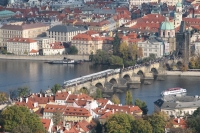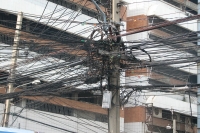



|
"You only live once, but if you do it right, once is enough." |
After witnessing the magical Iguazu Falls we headed for Rio de Janeiro only to see that the Brazilians have the same habits of eating very late like their neighbors, the Argentinians. When half of the bus was already sleeping around 10:30 PM, we stopped for dinner while the other half was hurrying to get a good seat at an “All you can eat” restaurant, and again, all of this at 10:30 PM.
We first went north of Rio to a very small village called Buzios which is famous for its beautiful beaches. Here we spent a couple of days relaxing at the beach and getting a better look of the typical Brazilian dishes. Then we headed to Rio de Janeiro as a last stop in South America after a journey of around 4 month on this continent.
Rio de Janeiro is a city of extremes. Staying in the good neighborhoods of Ipanema, or its more famous twin the Copacabana, will cost you a lot more than staying in a good hotel in one of the top destinations in Europe. For me Rio looked to be a typical tourist rip-off place because the prices are definitely higher than in Germany when you think about what you’re paying for accommodation, food or tourist-tours. And it’s not even getting close to the World Cup or the Olympiads when the hotel prices will probably reach unimaginable figures.
But once here, there are a lot of things this city has to offer. The view from the statue of Christ, The Redeemer and the one from the Sugar Loaf are definitely one of the best city-views that we have ever seen. Diana rated the view of Rio from the Sugar Loaf as being the best nightly view of a city, she has ever seen.
One amazing thing we’ve seen or done
Before I give you details about the tour to a favela in Rio I want to say that this is not the typical image of how Brazilians live. It’s rather the exception of the rule and many Brazilian say it’s not even part of their culture, but it’s a fact that some people of the lower class live in favelas and it’s definitely a MUST to visit such a place if you go to Rio.
We went to Rocinha, the biggest favela in Rio and the second largest in South America, where it’s estimated that around 300.000 people are living. Because most favelas are ruled by drug lords and the criminality is one of the highest around here it’s not the place where you want to go alone if you don’t know what you’re doing. So we took a tour with a guide who lives in this favela and knows the place very well. He told us a lot of new information about the society structure in a favela and about the day to day problems that people encounter here. For example, because favelas are not recognized by the city, people don’t actually have an address so there was a woman who was responsible with receiving the mail for a neighborhood and for this everybody had to pay her a small monthly fee. Another funny thing is that every store of a building belongs to a family and if you own the upper store you can sell your roof to somebody else and he will build his house over yours. I could write on and on about the amazing things we saw in Rocinha but it’s better if you take a look at the pictures which in this case will tell more than a thousand words.
Next stop
Sydney, Australia
Un oras foarte colorat … I like it! Nici plajele n-arata rau .
.